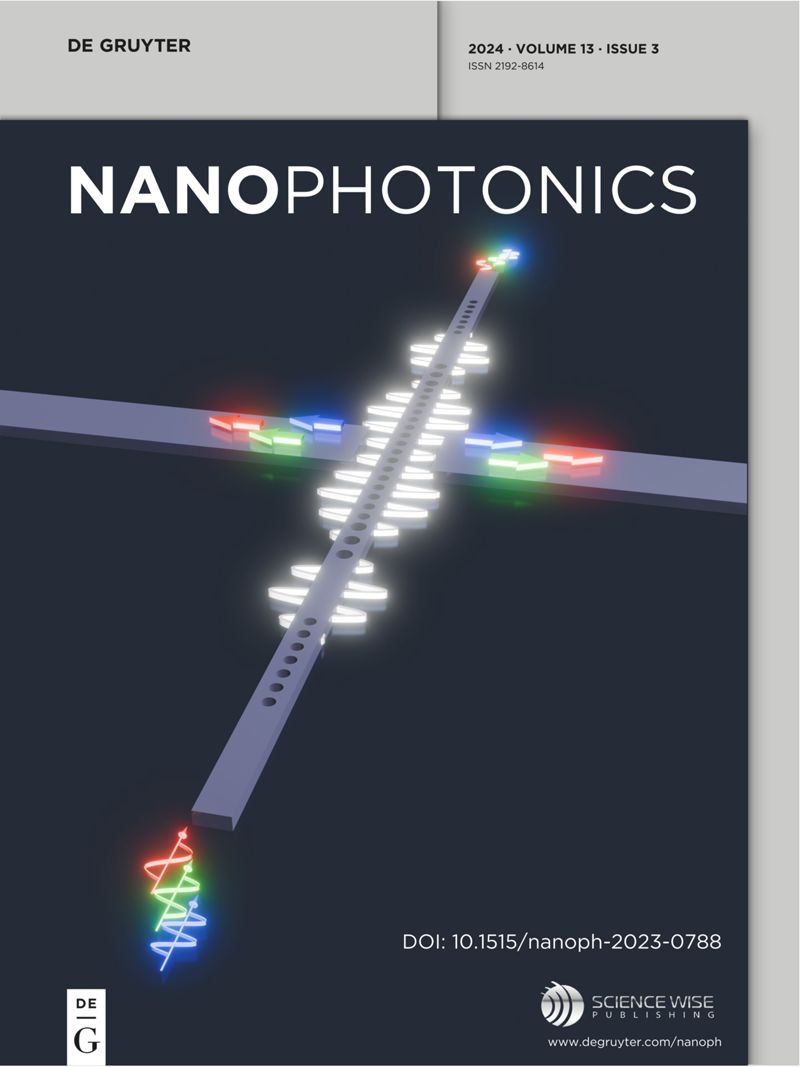pecvd生长的氮化硅薄膜中的单光子发射器:从材料生长到光物理性质
IF 6.5
2区 物理与天体物理
Q1 MATERIALS SCIENCE, MULTIDISCIPLINARY
引用次数: 0
摘要
氮化硅(SiN)具有宽透明窗、高折射率、低光学损耗和半导体代工厂兼容性等优点,是量子光子学的关键材料。我们研究了等离子体增强化学气相沉积(PECVD)生长的SiN薄膜中单光子发射器的形成,探索了它们的光物理性质及其对生长条件的依赖。发射体在整个氮硅前驱体比例范围内被观察到,从富硅到富氮的条件下,由低背景荧光实现。与之前的报道(~ 1.7)相比,我们在SiN薄膜中展示了具有更高折射率(1.8-1.9)的单光子发射器。值得注意的是,富氮,更薄的薄膜产生特别明亮的发射体,发射寿命更短,可能是由于更有效的退火。富硅的SiN薄膜表现出红移发射,表明其成分可能提供了波长调谐的机制。这些发现确立了在铸造厂标准PECVD工具中形成发射体的可行性,推进了基于sin的量子光子技术的可扩展性和实验室到晶圆厂的过渡。本文章由计算机程序翻译,如有差异,请以英文原文为准。
Single-photon emitters in PECVD-grown silicon nitride films: from material growth to photophysical properties
Silicon nitride (SiN) is a key material for quantum photonics due to its wide transparency window, high refractive index, low optical losses, and semiconductor foundry compatibility. We study the formation of single-photon emitters in SiN films grown by plasma-enhanced chemical vapor deposition (PECVD), exploring their photophysical properties and dependence on growth conditions. Emitters were observed across the entire range of nitrogen-to-silicon precursor ratios, from silicon-rich to nitrogen-rich conditions, enabled by the low background fluorescence. We demonstrate single-photon emitters in SiN films with a higher refractive index (1.8–1.9) compared to our previous reports (∼1.7). Notably, nitrogen-rich, thinner films yield particularly bright emitters with shorter emission lifetimes, likely due to more efficient annealing. Silicon-rich SiN films exhibit red-shifted emission, suggesting that composition may provide a mechanism for wavelength tuning. These findings establish the feasibility of emitters formation in foundry standard PECVD tools, advancing the scalability and lab-to-fab transition of SiN-based quantum photonic technologies.
求助全文
通过发布文献求助,成功后即可免费获取论文全文。
去求助
来源期刊

Nanophotonics
NANOSCIENCE & NANOTECHNOLOGY-MATERIALS SCIENCE, MULTIDISCIPLINARY
CiteScore
13.50
自引率
6.70%
发文量
358
审稿时长
7 weeks
期刊介绍:
Nanophotonics, published in collaboration with Sciencewise, is a prestigious journal that showcases recent international research results, notable advancements in the field, and innovative applications. It is regarded as one of the leading publications in the realm of nanophotonics and encompasses a range of article types including research articles, selectively invited reviews, letters, and perspectives.
The journal specifically delves into the study of photon interaction with nano-structures, such as carbon nano-tubes, nano metal particles, nano crystals, semiconductor nano dots, photonic crystals, tissue, and DNA. It offers comprehensive coverage of the most up-to-date discoveries, making it an essential resource for physicists, engineers, and material scientists.
 求助内容:
求助内容: 应助结果提醒方式:
应助结果提醒方式:


